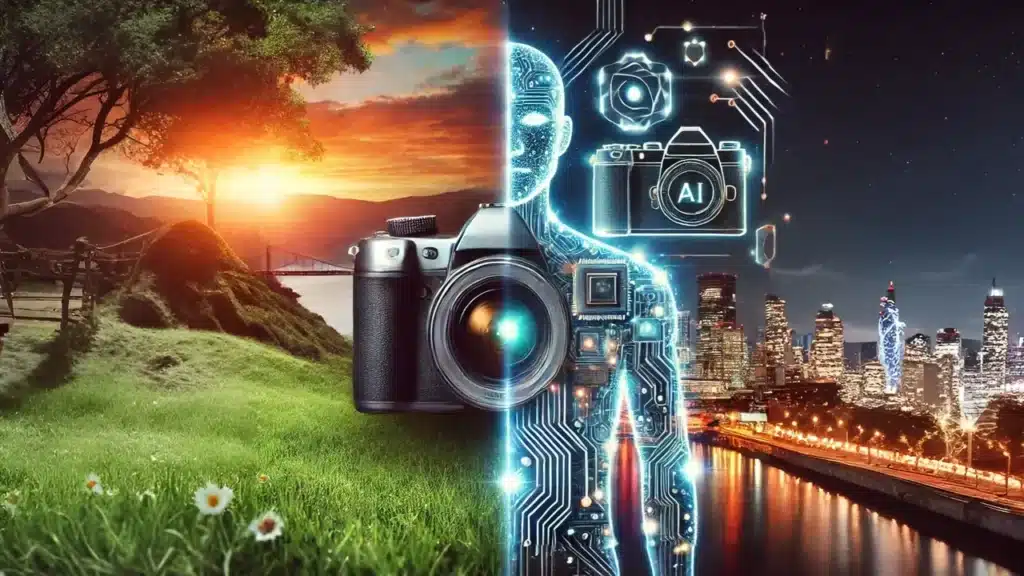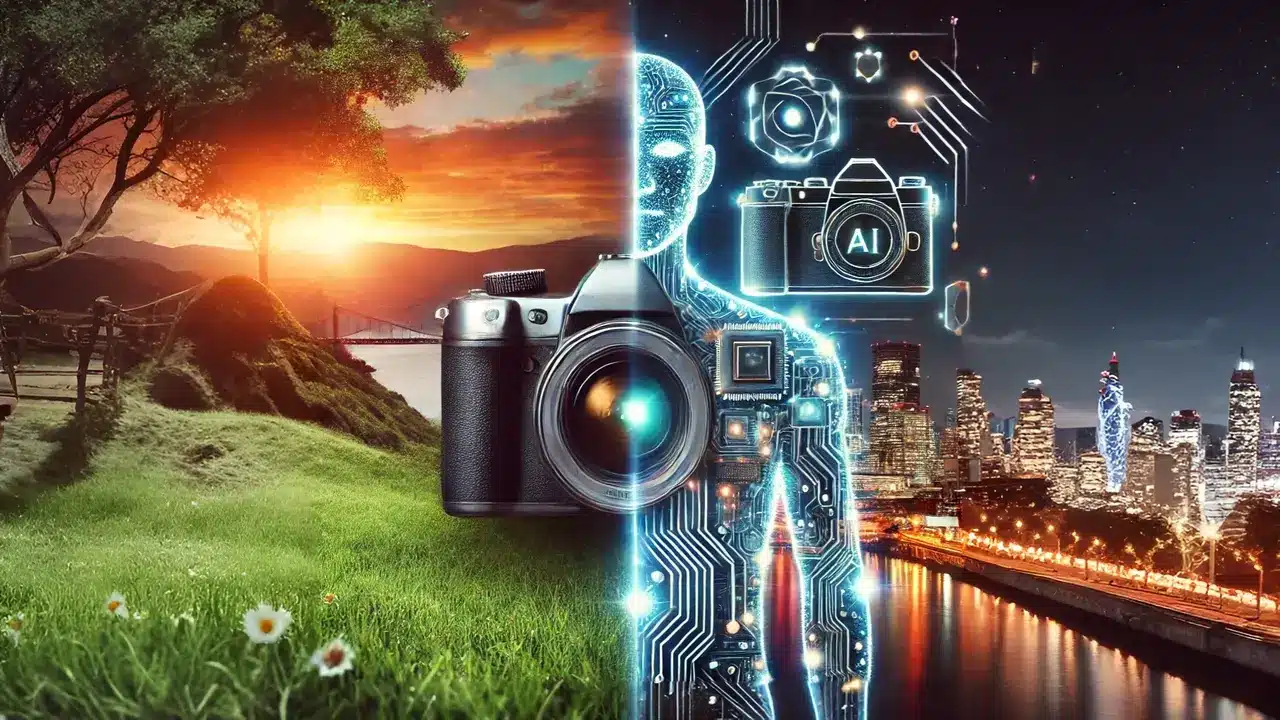Photography has always been a dynamic art form, evolving alongside technological advancements. From film cameras to digital photography, every era has introduced new tools that shape how we capture and perceive images. Now, artificial intelligence (AI) is at the forefront of this transformation, bringing unprecedented possibilities.
How will AI impact traditional photography? Will it replace human creativity or enhance it? This article explores the future of traditional photography in an AI-driven world, highlighting innovations, challenges, and the balance between technology and artistic expression.

The Role of AI in Photography
AI as an Assistive Tool for Photographers
AI is not here to replace photographers but to assist them in refining their craft. The next generation of AI-powered tools will offer:
1. Intelligent Camera Assistance
- AI-Powered Scene Recognition: Cameras could automatically adjust settings based on scene analysis, ensuring optimal exposure, focus, and white balance.
- Real-Time Feedback: AI could provide real-time suggestions, guiding photographers toward better framing and composition.
2. Smart Editing Capabilities
- Automated Enhancements: AI can remove noise, correct exposure, and fine-tune colors while maintaining the original artistic intent.
- Advanced Retouching: Facial recognition and object-aware editing can make retouching faster without over-processing.
Case Study: AI in Smartphone Cameras
Brands like Apple, Google, and Samsung integrate AI-powered computational photography into their smartphone cameras. Features like Night Mode, Deep Fusion, and Portrait Enhancements showcase how AI refines photography, even for casual users.
AI-Driven Workflow Optimization
1. Smart Organization & Curation
Photographers spend significant time managing their digital libraries. AI can:
- Auto-Tag Photos: AI can recognize faces, objects, and locations to categorize photos for easy retrieval.
- Select the Best Shots: AI can analyze a burst of images and suggest the best one based on clarity, expressions, and composition.
2. Efficient Post-Processing
- AI-Powered Batch Editing: Applying adjustments across multiple photos while preserving nuances.
- Background and Object Removal: AI can seamlessly remove unwanted objects while keeping details intact.
Example: Adobe Sensei in Photoshop & Lightroom
Adobe’s AI tool, Sensei, enhances post-processing with automatic tagging, subject selection, and one-click sky replacement. This speeds up editing while preserving artistic control.
AI-Generated Art vs. Traditional Photography
AI-generated imagery has sparked debates in the photography community. Some key considerations include:
1. Generative AI in Image Creation
Tools like DALL·E, MidJourney, and Stable Diffusion can create photorealistic images from text prompts. This challenges the role of photographers, as AI can generate visuals without a camera.
2. Ethical Concerns & Authenticity
- Deepfake Dilemmas: AI-generated deepfake images raise concerns about misinformation and authenticity.
- Transparency in AI Use: Clear labeling of AI-edited images can help maintain trust.
3. The Future of Artistic Integrity
Traditional photography will continue to emphasize authenticity, with AI acting as a supportive tool rather than a creative replacement.
The Human Touch: Why Traditional Photography Will Endure
Despite AI’s rapid progress, human intuition and creativity remain irreplaceable. Here’s why traditional photography will persist:
1. Emotional Connection & Storytelling
Photography is about capturing emotions, moments, and human experiences. While AI can enhance images, it cannot feel or interpret emotions like a human photographer.
2. The Art of Composition & Perspective
Great photography isn’t just about technical perfection—it’s about storytelling through composition, angles, and lighting. These artistic choices require human vision.
3. Photography as a Cultural & Historical Record
Photographs serve as historical documentation. AI-assisted images might be powerful, but capturing real moments remains invaluable.
The Future of Photography: A Balance Between AI and Tradition
Instead of replacing traditional photography, AI will redefine its possibilities. The key to the future lies in a balanced approach:
1. Embracing AI for Efficiency
Photographers can utilize AI for time-saving tasks like sorting, basic editing, and enhancement while focusing on creativity.
2. Maintaining Creative Control
Photographers should use AI as a tool rather than allowing it to dictate artistic choices.
3. Ethical Considerations & Responsible AI Use
Transparency and responsible AI use will be crucial in maintaining trust in photography.
Future of Traditional Photography: Conclusion
AI is transforming photography by offering intelligent assistance, improving workflow efficiency, and even generating images. However, traditional photography’s essence—human creativity, emotion, and storytelling—remains irreplaceable.
The future of photography lies in harmony: leveraging AI’s capabilities while preserving the artistry that makes photography meaningful.
What are your thoughts on AI’s impact on photography? Share your opinions in the comments below!
Also Read: How Does AI Photography Compare to Traditional Photography Methods?
